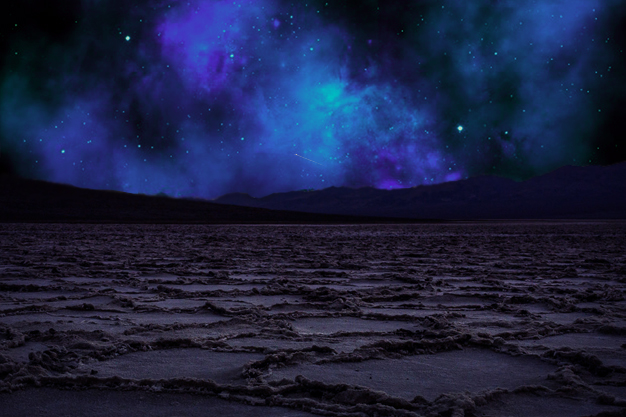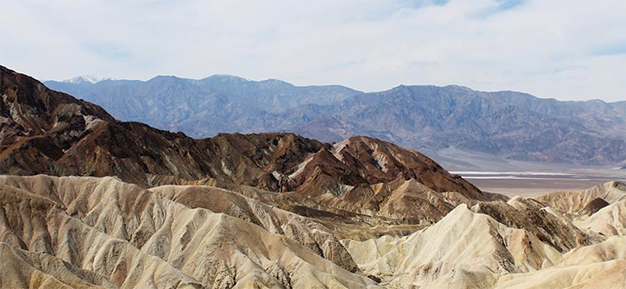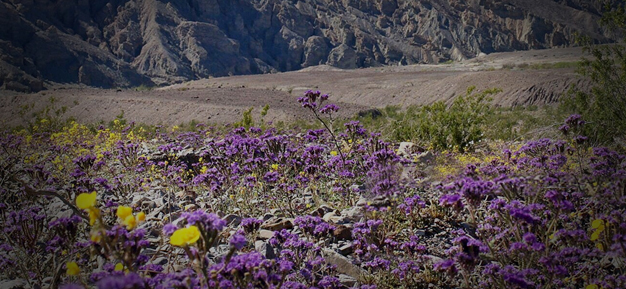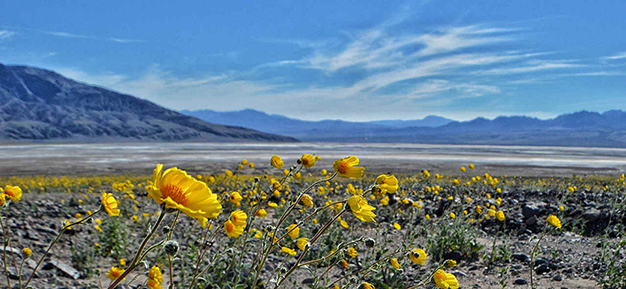
An essence both fleeting and so secure in the human heart that it has been deified and exalted in elaborate reverence by cultures around the world, Beauty is a concept that is at once fundamental and dynamic: inanimate in nature, but living and breathing at the very core of human perception. Beauty, as the universal element shall be named, is malleable and subject to nuances of individual experience and perspective; “in the eye of the beholder;” subject to the whim of the witness. Yet, even through such a variable and undulating existence, it is consistent, for Beauty never ceases to be. Beauty, in this sense, is akin to the soil of the hills, from which germinate the grasses, trees, and flowers that fill the air with sweet aromas, that we pluck with our fingers to gift to our lovers, or that we admire from afar. It is in a sense what we perceive, but its true essence dwells in a deeper place, waiting to arise if given a moment’s chance. The profound richness of true Beauty draws us in, and we, in our human nature, often succumb to its will.
Nevertheless, such a fascination can fade with time, as we might all have experienced at one moment or another, when we feel that what was once beautiful is no longer. This perception of depreciation of Beauty can be the result of distraction, lack of focus thereby leading to less appreciation for it. A decline in appreciation can also result from commonality – when what is objectively beautiful is experienced with regularity. Take clouds, for instance. Clouds, many would contend, are inherently beautiful. On occasion we may even catch ourselves looking up, admiring the grace or power of these white vapors suspended in the sky. Yet, because of their commonality, they are easily dismissed amidst our quotidian lives. They do not become less beautiful, however; they simply become unnoticed.
Professor emeritus John H. Brown of the University of Maryland writes, “To cultivate…appreciation is to cultivate fine discrimination of comparative…value.” In other words, there must be varying levels of Beauty. One thing can be more beautiful than another. When Beauty herself escapes our wandering gaze or fills it to the point of acceptance rather than appreciation, where can we look for something to stand out? Where can we find something comparatively more beautiful? It is here, when impermanence or ubiquity leaves us seeking, that the power of rarity blossoms.
Take those beautiful clouds. They are still beautiful, but at night or in the day they are overlooked, forgotten in sleep and responsibilities. Yet at two points during the day they are widely acknowledged for their Beauty. Professor Brown writes that in order to effectively compare Beauty, one must “provide a basis of distinction;” we must categorize and rank the factors for determining Beauty. In the cases of sunrise and sunset, what we might perceive as the obvious factor is color. For this reason, a grey sunset would be regarded as disappointing, while a brilliant one awe-inspiring. The color, however, remains superficial. It could be hypothesized that even if the clouds were the brightest orange, if they were so all day, every day, then they too would eventually be overlooked. What then could it be? Might it be the brevity of the color that draws our attention? We know that the once-white and beautiful clouds take on these bright hues only during two short periods of the day, and then they are gone. These painted clouds are more rare, thus inherently more beautiful; it is a direct relationship. For most of the day they drift from between the horizons, largely disregarded, when suddenly this momentary change of color – not the color itself – amplifies the clouds’ aesthetic value.
The year 2016 is a rare year. The El Niño Effect is in full swing, swirling the warm Pacific waters, generating weather strange even for the trends of a changing climate. Among those uncommon weather patterns is an increase of precipitation in perennially arid regions of the United States – including Death Valley, one of the hottest, driest places on Earth. It is a land of sand and salt, exposed rock and brittle shrubs. What vegetation does grow would make for naught but a skeleton bouquet. The land’s stark geography does offer its own version of Beauty and is seen by many in this light, yet her true nature endures many long, sweltering years, awaiting her chance to blanket the land and inspire wonder at her awesome power.
 In this land the forty-niners sought their fortunes in the mines, delving deep into the mineral-rich California mountains. In the darkness they toiled for their ores and gems, but was it really Beauty herself that they sought beneath the hills? For the splendor of the crystals they extracted from the Earth was surely tarnished by their thirst for profit and the loss of many lives. The miners, like Icarus, who flew too close to the sun and fell tumbling, were blinded by their search for worth, leaving nothing but scarred mountainsides and the scorched remains of ghost towns long abandoned, left to be reclaimed by the dust; for hubris taints the eye, and what was beheld as beauty was never Beauty herself. Now the only voice that can be heard among the decrepit shacks and rusted machinery is that of the desert wind, carrying now on its whispers the heavy clouds that bring the miracle of rain to a parched land.
In this land the forty-niners sought their fortunes in the mines, delving deep into the mineral-rich California mountains. In the darkness they toiled for their ores and gems, but was it really Beauty herself that they sought beneath the hills? For the splendor of the crystals they extracted from the Earth was surely tarnished by their thirst for profit and the loss of many lives. The miners, like Icarus, who flew too close to the sun and fell tumbling, were blinded by their search for worth, leaving nothing but scarred mountainsides and the scorched remains of ghost towns long abandoned, left to be reclaimed by the dust; for hubris taints the eye, and what was beheld as beauty was never Beauty herself. Now the only voice that can be heard among the decrepit shacks and rusted machinery is that of the desert wind, carrying now on its whispers the heavy clouds that bring the miracle of rain to a parched land.
 The vast blooms of Desert Gold and other flowering desert species that have made the Death Valley hillsides their canvass are among the least frequent phenomena in the United States. Green stems, yellow and purple petals bring life to the unforgiving landscape – one that does possess its own impressive geologic beauty, but that is also exponentially amplified by the super bloom. For this reason tourists abound, flocking from across the country to capture pictures and witness the rare Beauty with their own eyes, proving once again that such rarity affects profound inspiration. For years the seeds have lain dormant in the dry land, but now given the right opportunity, Beauty herself rises up from the soils of the hills and shows her true colors to the world. Such is the way she works, not only in the desert but in every corner of the universe, so be vigilant. She will show herself to you.
The vast blooms of Desert Gold and other flowering desert species that have made the Death Valley hillsides their canvass are among the least frequent phenomena in the United States. Green stems, yellow and purple petals bring life to the unforgiving landscape – one that does possess its own impressive geologic beauty, but that is also exponentially amplified by the super bloom. For this reason tourists abound, flocking from across the country to capture pictures and witness the rare Beauty with their own eyes, proving once again that such rarity affects profound inspiration. For years the seeds have lain dormant in the dry land, but now given the right opportunity, Beauty herself rises up from the soils of the hills and shows her true colors to the world. Such is the way she works, not only in the desert but in every corner of the universe, so be vigilant. She will show herself to you.
 Some may contend that all Beauty is rare, and in some respects that may be true. I cannot deny that when you witness something that is beautiful, you should appreciate it. Love it. Do not disregard it as being common. Stop, if just for a moment, and acknowledge its essence, for it truly is an existence worthy of thanks and recognition. But when a Beauty is unique or you are able to identify it as a definitive rarity, take special note. Whether she shows herself to you through aesthetics or personal interaction, a sensation or a relationship, allow yourself to succumb. Trust that it will make an impression on your memory with the depth of that Beauty itself, for they are these moments of astonishment that carry us forward, if only pushing by way of recollection, in hope that another will one day come.
Some may contend that all Beauty is rare, and in some respects that may be true. I cannot deny that when you witness something that is beautiful, you should appreciate it. Love it. Do not disregard it as being common. Stop, if just for a moment, and acknowledge its essence, for it truly is an existence worthy of thanks and recognition. But when a Beauty is unique or you are able to identify it as a definitive rarity, take special note. Whether she shows herself to you through aesthetics or personal interaction, a sensation or a relationship, allow yourself to succumb. Trust that it will make an impression on your memory with the depth of that Beauty itself, for they are these moments of astonishment that carry us forward, if only pushing by way of recollection, in hope that another will one day come.
 In this land the forty-niners sought their fortunes in the mines, delving deep into the mineral-rich California mountains. In the darkness they toiled for their ores and gems, but was it really Beauty herself that they sought beneath the hills? For the splendor of the crystals they extracted from the Earth was surely tarnished by their thirst for profit and the loss of many lives. The miners, like Icarus, who flew too close to the sun and fell tumbling, were blinded by their search for worth, leaving nothing but scarred mountainsides and the scorched remains of ghost towns long abandoned, left to be reclaimed by the dust; for hubris taints the eye, and what was beheld as beauty was never Beauty herself. Now the only voice that can be heard among the decrepit shacks and rusted machinery is that of the desert wind, carrying now on its whispers the heavy clouds that bring the miracle of rain to a parched land.
In this land the forty-niners sought their fortunes in the mines, delving deep into the mineral-rich California mountains. In the darkness they toiled for their ores and gems, but was it really Beauty herself that they sought beneath the hills? For the splendor of the crystals they extracted from the Earth was surely tarnished by their thirst for profit and the loss of many lives. The miners, like Icarus, who flew too close to the sun and fell tumbling, were blinded by their search for worth, leaving nothing but scarred mountainsides and the scorched remains of ghost towns long abandoned, left to be reclaimed by the dust; for hubris taints the eye, and what was beheld as beauty was never Beauty herself. Now the only voice that can be heard among the decrepit shacks and rusted machinery is that of the desert wind, carrying now on its whispers the heavy clouds that bring the miracle of rain to a parched land.
 The vast blooms of Desert Gold and other flowering desert species that have made the Death Valley hillsides their canvass are among the least frequent phenomena in the United States. Green stems, yellow and purple petals bring life to the unforgiving landscape – one that does possess its own impressive geologic beauty, but that is also exponentially amplified by the super bloom. For this reason tourists abound, flocking from across the country to capture pictures and witness the rare Beauty with their own eyes, proving once again that such rarity affects profound inspiration. For years the seeds have lain dormant in the dry land, but now given the right opportunity, Beauty herself rises up from the soils of the hills and shows her true colors to the world. Such is the way she works, not only in the desert but in every corner of the universe, so be vigilant. She will show herself to you.
The vast blooms of Desert Gold and other flowering desert species that have made the Death Valley hillsides their canvass are among the least frequent phenomena in the United States. Green stems, yellow and purple petals bring life to the unforgiving landscape – one that does possess its own impressive geologic beauty, but that is also exponentially amplified by the super bloom. For this reason tourists abound, flocking from across the country to capture pictures and witness the rare Beauty with their own eyes, proving once again that such rarity affects profound inspiration. For years the seeds have lain dormant in the dry land, but now given the right opportunity, Beauty herself rises up from the soils of the hills and shows her true colors to the world. Such is the way she works, not only in the desert but in every corner of the universe, so be vigilant. She will show herself to you.
 Some may contend that all Beauty is rare, and in some respects that may be true. I cannot deny that when you witness something that is beautiful, you should appreciate it. Love it. Do not disregard it as being common. Stop, if just for a moment, and acknowledge its essence, for it truly is an existence worthy of thanks and recognition. But when a Beauty is unique or you are able to identify it as a definitive rarity, take special note. Whether she shows herself to you through aesthetics or personal interaction, a sensation or a relationship, allow yourself to succumb. Trust that it will make an impression on your memory with the depth of that Beauty itself, for they are these moments of astonishment that carry us forward, if only pushing by way of recollection, in hope that another will one day come.
Some may contend that all Beauty is rare, and in some respects that may be true. I cannot deny that when you witness something that is beautiful, you should appreciate it. Love it. Do not disregard it as being common. Stop, if just for a moment, and acknowledge its essence, for it truly is an existence worthy of thanks and recognition. But when a Beauty is unique or you are able to identify it as a definitive rarity, take special note. Whether she shows herself to you through aesthetics or personal interaction, a sensation or a relationship, allow yourself to succumb. Trust that it will make an impression on your memory with the depth of that Beauty itself, for they are these moments of astonishment that carry us forward, if only pushing by way of recollection, in hope that another will one day come.

